Sea-ing a Better Way to Feed the World
Seafood and seaweed are underutilized food sources with the potential to improve public health and sustainably feed the world’s growing population.
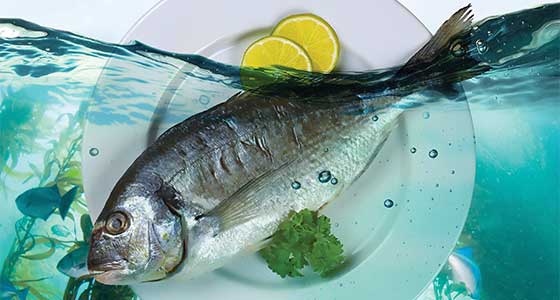
By the year 2050, 9 billion people will populate the planet, and the world’s food supply will need to increase by 70% to feed them all. Consequently, expanding food production to sustain the lives of the world’s projected population is a primary goal for the food industry. But the current strategy for food production—in which more and more land and freshwater resources are allocated to accommodate a high demand for water-intensive crops (e.g., almonds, walnuts, soybeans, etc.), meat, and animal products—is not sustainable. The heavy reliance on land-based agriculture has taken a toll: Rapid deforestation, soil degradation, greenhouse gases, and the depletion of freshwater supplies are all associated with raising livestock and growing crops. However, food and nutrition elements of a significant resource remain largely untapped: the sea. Oceans offer a variety of food and nutrition options that most Westernized cultures have barely utilized, and the options are not only more eco-friendly but, in some cases, more nutritious than land-based foods. These foods fall into two categories: 1) fish and other marine animals and 2) seaweed.
A Seafood Monoculture
Water constitutes more than 70% of the earth’s surface, and 97% of earth’s surface water is salt water, comprising oceans. Despite the magnitude of the presence of ocean water on earth, as a whole, humans utilize only a small percentage of the sea for food: Humans obtain 99% of their food from the terrestrial environment and less than 1% from oceans and other aquatic environments (Pimentel et al. 2010). The diets of most Americans and other Western cultures reflect this woefully imbalanced exploitation of resources for food production: On average, Americans, as well as other Western cultures, consume only one serving of seafood per week. And despite the thousands of known seafood species that are edible, most of the seafood in the American diet (97%) consists of only 10 items: shrimp, salmon, tuna, tilapia, pollock, pangasius, cod, catfish, crab, and clams.
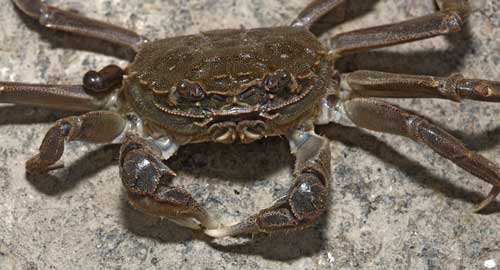 Asian cultures have a much more balanced approach to diet and food production and the range of seafood they consume is far more diverse. In addition to tuna, salmon, shrimp, and other seafood items that are popular in America, abalone, blowfish, carp, eel, mackerel, octopus, sardines, sea urchin, and squid are regularly consumed in Asian countries. Seafood is also a dominant part of cuisines in Denmark, Finland, Iceland, Norway, and Sweden. Citizens in these countries have much better health outcomes and longer lifespans than Americans and others who do not consume seafood frequently. In Japan, where seafood is consumed daily, the life expectancy of men is 80 years and that of women is 87 years; men and women in Nordic countries also have longer lifespans, averaging 79 years for men and 84 for women. In comparison, the life expectancy of American men is 76 years and that of American women is 80 years. Moreover, rates of obesity, cancer, cardiovascular disease, and diabetes are very low in Nordic countries and especially low in Japan, where the greatest variety of seafood is eaten.
Asian cultures have a much more balanced approach to diet and food production and the range of seafood they consume is far more diverse. In addition to tuna, salmon, shrimp, and other seafood items that are popular in America, abalone, blowfish, carp, eel, mackerel, octopus, sardines, sea urchin, and squid are regularly consumed in Asian countries. Seafood is also a dominant part of cuisines in Denmark, Finland, Iceland, Norway, and Sweden. Citizens in these countries have much better health outcomes and longer lifespans than Americans and others who do not consume seafood frequently. In Japan, where seafood is consumed daily, the life expectancy of men is 80 years and that of women is 87 years; men and women in Nordic countries also have longer lifespans, averaging 79 years for men and 84 for women. In comparison, the life expectancy of American men is 76 years and that of American women is 80 years. Moreover, rates of obesity, cancer, cardiovascular disease, and diabetes are very low in Nordic countries and especially low in Japan, where the greatest variety of seafood is eaten.
Research indicates that the longevity and good health enjoyed by the people of Japan, Finland, Iceland, and Scandinavia are due largely to the nutrition profile of fish and other seafood. In addition to being high in protein, marine animals are rich in vitamins and minerals such as vitamins A and D, B vitamins, selenium, zinc, iodine, and iron. Fish and other marine animals are also the predominant sources of the omega-3 fatty acids docosahexaenoic acid (DHA) and eicosapentaenoic acid (EPA), both of which are essential for human health, particularly proper brain development and functioning: DHA makes up a significant proportion of nerve-cell membranes and synapses in the central nervous system and is the most abundant fatty acid in the brain. In addition, both DHA and EPA have been found to have anti-inflammatory properties that fight cardiovascular disease by lowering blood pressure and triglyceride levels, improving the function of blood vessels, and decreasing the risk of cardiac arrhythmias. In fact, studies reveal that consuming two servings of seafood a week reduces the chances of dying from heart disease by more than 35% (HSPH 2015).
The convincing evidence linking several health benefits to the consumption of eating fish and other seafood has led to recommendations in the Dietary Guidelines for Americans that adults, including pregnant women, eat eight to 12 ounces of seafood a week. However, less than 20% of Americans meet that goal: Less than one-third of Americans eat seafood once a week, and close to half eat seafood only occasionally or not at all (HSPH 2015). There are several reasons for Americans’ far from adequate consumption of seafood, ranging from apprehension about taste, texture, and preparation to concerns about overfishing, whether seafood options are wild-caught or farm-raised, mercury content, and pesticide residues. A dislike of the taste and/or texture of fish is subjective and as such is unlikely to be overcome with authoritative advice. But plenty of authoritative information exists regarding whether seafood caught in the wild is more nutritious and safer than seafood raised in aquaculture systems.
--- PAGE BREAK ---
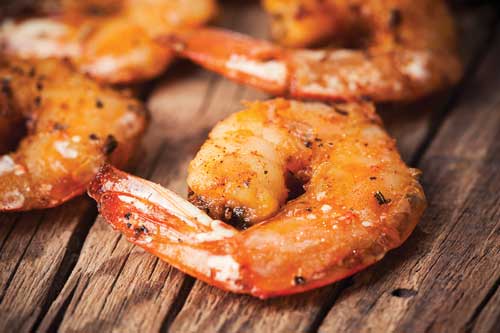 Seafood Safety and Preferences
Seafood Safety and Preferences
“Fishery production has flat-lined, so we have reached a point at which aquaculture production exceeds that of wild production. We will never ever return to a point where the number of wild-caught fish exceeds aquaculture production,” says James Morris, an ecologist with the National Oceanic and Atmospheric Administration’s National Ocean Service. Consequently, nearly 90% of the seafood in the United States is imported and approximately half of it is farm-raised. Shrimp and other shellfish (clams, oysters, mussels, scallops), Atlantic salmon, and tilapia make up the majority of aquaculture imports, and Asia is the dominant player in aquaculture development, producing 89% of aquaculture seafood. Although the United States has some seafood aquaculture operations, it ranks 13th in terms of production—behind China, India, Vietnam, Indonesia, Thailand, Bangladesh, Norway, Chile, the Philippines, Japan, Egypt, and Myanmar.
According to the U.S. Food and Drug Administration (FDA) and the National Oceanic and Atmospheric Administration, farm-raised seafood is safe and healthy to eat. Seafood farmers adhere to the same federal and state food-safety guidelines as terrestrial farmers and seafood producers. They harvest only from approved waters, follow feed regulations, handle and process seafood under sanitary conditions, and maintain records. Although vaccines are used to prevent disease in farmed seafood, the use of antibiotics and other drugs is rare. From a nutrition standpoint, the consensus among scientists is that wild-caught and farm-raised seafood are very similar in nutritional content, and in some instances, farm-raised seafood contains higher values of certain nutrients. For example, levels of omega-3 fatty acids in farm-raised salmon are just as high as, or higher than, levels in wild salmon and the same is true for levels of certain vitamins and minerals (USDA 2015).
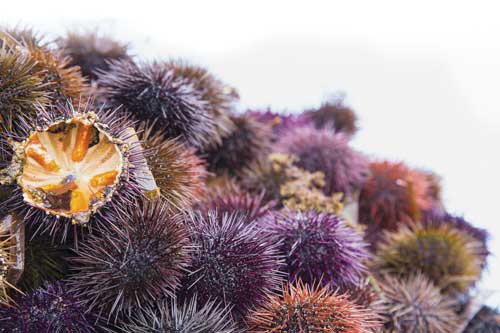 All seafood, whether wild-caught or farm-raised, is exposed to naturally occurring biotoxins and/or manmade contaminants. For this reason, concerns that levels of mercury and polychlorinated biphenyls (PCBs) are higher in farm-raised fish than wild fish are either unfounded or greatly exaggerated. As a natural element, mercury enters lakes, rivers, and oceans inherently and as a consequence of human industrial activity; it converts to methylmercury in the water. Mercury and methylmercury accumulate in the muscle tissue of fish and other seafood, so larger and older fish tend to have higher mercury levels than younger and smaller fish. Likewise, fish and other seafood that regularly eat other fish also tend to have higher mercury levels. The greatest risk of exposure to PCBs in seafood is from fish caught recreationally in contaminated waters. Unlike mercury, PCBs accumulate mainly in fatty tissue, so trimming fat from fish sizably reduces PCB levels. Despite the fact that both farm-raised and wild-caught fish may contain trace amounts of PCBs and mercury, the FDA and the U.S. Dept. of Agriculture recommend that all demographics eat seafood at least twice a week. However, pregnant women and young children should avoid eating king mackerel, shark, swordfish, and tilefish from the Gulf of Mexico.
All seafood, whether wild-caught or farm-raised, is exposed to naturally occurring biotoxins and/or manmade contaminants. For this reason, concerns that levels of mercury and polychlorinated biphenyls (PCBs) are higher in farm-raised fish than wild fish are either unfounded or greatly exaggerated. As a natural element, mercury enters lakes, rivers, and oceans inherently and as a consequence of human industrial activity; it converts to methylmercury in the water. Mercury and methylmercury accumulate in the muscle tissue of fish and other seafood, so larger and older fish tend to have higher mercury levels than younger and smaller fish. Likewise, fish and other seafood that regularly eat other fish also tend to have higher mercury levels. The greatest risk of exposure to PCBs in seafood is from fish caught recreationally in contaminated waters. Unlike mercury, PCBs accumulate mainly in fatty tissue, so trimming fat from fish sizably reduces PCB levels. Despite the fact that both farm-raised and wild-caught fish may contain trace amounts of PCBs and mercury, the FDA and the U.S. Dept. of Agriculture recommend that all demographics eat seafood at least twice a week. However, pregnant women and young children should avoid eating king mackerel, shark, swordfish, and tilefish from the Gulf of Mexico.
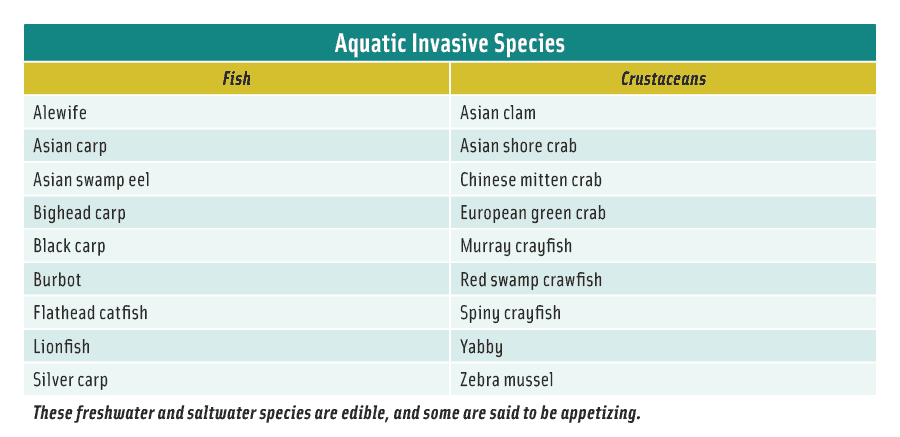 When it comes to seafood nutrition and safety, the focus is usually on wild-caught versus farm-raised and levels of environmental contaminants, but perhaps a more important factor is how seafood is prepared (e.g., baked, fried, or grilled). Although the EPA and DHA in seafood are associated with decreased inflammation, oxidative stress, and blood pressure, data from a large study indicate that these benefits may only be realized with baked or broiled seafood: Women who consumed five or more servings of baked or broiled fish had a 30% lower risk of experiencing heart failure whereas fried fish was associated with a higher incidence of heart failure (Belin et al. 2011). Fried seafood also appears to diminish the positive effects of seafood on the brain and cognitive health. Research shows that regular consumption of baked or broiled fish is associated with increased volume in the areas of the brain associated with memory and cognition; this effect was not evident with regular consumption of fried fish (Raji et al. 2014).
When it comes to seafood nutrition and safety, the focus is usually on wild-caught versus farm-raised and levels of environmental contaminants, but perhaps a more important factor is how seafood is prepared (e.g., baked, fried, or grilled). Although the EPA and DHA in seafood are associated with decreased inflammation, oxidative stress, and blood pressure, data from a large study indicate that these benefits may only be realized with baked or broiled seafood: Women who consumed five or more servings of baked or broiled fish had a 30% lower risk of experiencing heart failure whereas fried fish was associated with a higher incidence of heart failure (Belin et al. 2011). Fried seafood also appears to diminish the positive effects of seafood on the brain and cognitive health. Research shows that regular consumption of baked or broiled fish is associated with increased volume in the areas of the brain associated with memory and cognition; this effect was not evident with regular consumption of fried fish (Raji et al. 2014).
Clearly the benefits of eating seafood outweigh the risks, which means that consumers should eat more fish—baked, not fried. But ensuring that every resident on the planet has access to fish is a task that is not sustainable through current methods. Oceans contain more than 200,000 species, but only 7% of them have been identified; therefore, global seafood consumption revolves around the supply and capture of only a few seafood species. In fact, although between 300 and 500 different species of seafood are sold for human consumption, only three types of seafood make up more than 50% of all seafood consumed: shrimp, tuna, and salmon (Seafood Health Facts 2015). Moreover, the stocks of certain wild seafood species in global fisheries have reached a plateau, and the stocks of some fisheries are even in decline. Aquaculture is one solution, but it alone will not solve the problem—especially since some consumers insist on eating only wild-caught seafood.
--- PAGE BREAK ---
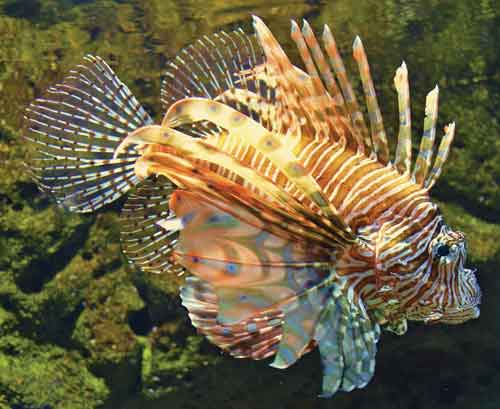 Perhaps another more viable solution is expanding humans’ seafood palate beyond the 10 most consumed species to include mackerel, mullet, sardines, and other local seafood from America’s coasts; more filter feeders (oysters, mussels, and clams); new unidentified edible species; and aquatic invasive species such as Asian carp, burbot, European green crabs, zebra mussels, Asian shore crabs, and lionfish. “Eat-the-invader programs are interesting,” Morris says. “Harvesting lionfish commercially is one of the only approaches that we have to combat the invasion. In the case of lionfish, we need a removal strategy to help with local control, so we do encourage commercial harvesting of lionfish, Asian carp, and other invasive species.” Moreover, lionfish—as well as other invasive species—are tasty: “Lionfish have white flaky meat and are high in omega-3 fatty acids. They are a member of the scorpionfish family and scorpionfish are good to eat, so it is no surprise that lionfish are good to eat too,” he adds. Invasive fish and other marine animals are not the only bounty of the sea; seaweed is also plentiful.
Perhaps another more viable solution is expanding humans’ seafood palate beyond the 10 most consumed species to include mackerel, mullet, sardines, and other local seafood from America’s coasts; more filter feeders (oysters, mussels, and clams); new unidentified edible species; and aquatic invasive species such as Asian carp, burbot, European green crabs, zebra mussels, Asian shore crabs, and lionfish. “Eat-the-invader programs are interesting,” Morris says. “Harvesting lionfish commercially is one of the only approaches that we have to combat the invasion. In the case of lionfish, we need a removal strategy to help with local control, so we do encourage commercial harvesting of lionfish, Asian carp, and other invasive species.” Moreover, lionfish—as well as other invasive species—are tasty: “Lionfish have white flaky meat and are high in omega-3 fatty acids. They are a member of the scorpionfish family and scorpionfish are good to eat, so it is no surprise that lionfish are good to eat too,” he adds. Invasive fish and other marine animals are not the only bounty of the sea; seaweed is also plentiful.
Adding Seaweed to the Diet
Seaweeds may look like plants and create their own food through photosynthesis, but they are not plants. They are marine algae that grow in oceans as well as lakes and rivers and can be classified into three groups: brown algae, red algae, and green algae (all seaweed are algae but not all algae are seaweed). Brown seaweeds are the largest and can range in length from 30 centimeters to 100 feet. At the greatest depths of the sea are red seaweeds, which can range in length from a few centimeters to about three feet; red seaweeds are not always red and can be purple, bluish, or brownish red in color. Green seaweeds are similar in size to red seaweed, but unlike red and brown seaweeds, green seaweeds reside in shallow waters and are therefore less common in the ocean. Of the three types, a type of brown seaweed, kelp, is the most widely consumed, but all three are edible.
Seaweeds have been a staple of Japanese, Chinese, and Korean cuisines for thousands of years. Their use as food likely began in the fourth century in Japan and the sixth century in China. Westerners are probably most familiar with nori, a red seaweed used to wrap sushi rolls, and wakame, a brown seaweed used for miso soup, but Japan, China, Korea, and Southeast Asian countries also use brown, red, and green seaweeds for salads, soups, stews, seasoning, and as an accompaniment to seafood. And while seaweed is most often associated with Asian cuisines, coastal residents in Canada and Europe have been eating seaweed for hundreds of years as well. In Iceland a type of red seaweed, dulse, is consumed in dried form as a snack and added to salads, bread dough, and curds. Also made from red seaweed, laverbread is a purée served in Wales with toast, bacon, and shellfish or rolled in oatmeal and fried in bacon fat. Fine cuisine featuring red and brown seaweed, rebranded as sea vegetables, is gracing the menus at Michelin-starred restaurants in Ireland and Scotland. And sea parsley, made from red seaweed, is sprinkled on dishes in Nova Scotia, Canada, as a substitute for salt and to add a salty sea flavor.
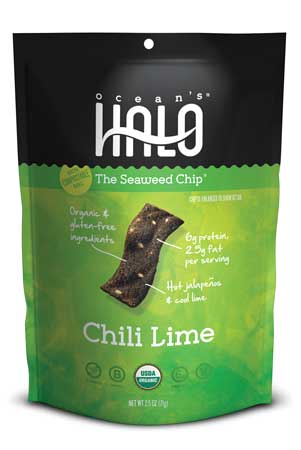 In the United States, seaweeds are consumed almost exclusively as additives in processed foods. Brown and red seaweeds are used to produce three hydrocolloids: carrageenan, agar, and alginate. These substances are used to thicken, stabilize, or suspend many foods, and their use as hydrocolloids dates back to 1658. Carrageenan, a product of red seaweed, is used in chocolate, ice cream, flan, pudding, whipped cream, yogurt, cheese, jam, marshmallows, shakes, syrups, and meat products. Agar, also produced from red seaweed, is used in breads, pastries, processed cheeses, mayonnaise, puddings, frozen dairy products, icing, and fruit juices. And alginate, a product of brown seaweed, is used in salad dressings, gravies, jellies, jams, puddings, and pie fillings. A few U.S. companies, however, are thinking beyond additives and have developed seaweed food products. “Seaweed has so many different applications, I think that almost any food could benefit from the addition of a savory flavor ingredient such as seaweed,” says Mike Shim, co-founder of New Frontier Foods Inc., Burlingame, Calif. (www.oceanshalo.com). “A lot of people in the United States have negative associations with seaweed, but the reality is that seaweed is a very healthy, sustainable food. As chefs and restaurants continue to add seaweed to their menus, I think Americans will eventually begin to have more positive associations. All up and down the food chain, food industry players have an incentive to jump on the seaweed bandwagon.”
In the United States, seaweeds are consumed almost exclusively as additives in processed foods. Brown and red seaweeds are used to produce three hydrocolloids: carrageenan, agar, and alginate. These substances are used to thicken, stabilize, or suspend many foods, and their use as hydrocolloids dates back to 1658. Carrageenan, a product of red seaweed, is used in chocolate, ice cream, flan, pudding, whipped cream, yogurt, cheese, jam, marshmallows, shakes, syrups, and meat products. Agar, also produced from red seaweed, is used in breads, pastries, processed cheeses, mayonnaise, puddings, frozen dairy products, icing, and fruit juices. And alginate, a product of brown seaweed, is used in salad dressings, gravies, jellies, jams, puddings, and pie fillings. A few U.S. companies, however, are thinking beyond additives and have developed seaweed food products. “Seaweed has so many different applications, I think that almost any food could benefit from the addition of a savory flavor ingredient such as seaweed,” says Mike Shim, co-founder of New Frontier Foods Inc., Burlingame, Calif. (www.oceanshalo.com). “A lot of people in the United States have negative associations with seaweed, but the reality is that seaweed is a very healthy, sustainable food. As chefs and restaurants continue to add seaweed to their menus, I think Americans will eventually begin to have more positive associations. All up and down the food chain, food industry players have an incentive to jump on the seaweed bandwagon.”
Shim’s company creates Ocean’s Halo Seaweed Chips, which are made with organic, sustainably harvested seaweed and rice flour. These shelf-stable snacks were originally conceived as a healthy alternative to potato chips and dips. “The company was founded by two dads of Korean descent who grew up eating seaweed and two dads who grew up in America eating tortilla chips and potato chips. One of the dads, [co-founder] Robert Mock—who grew up in Dallas, Texas—asked me whether seaweed was available in a chip form, and I decided to try making a seaweed chip. We discovered that a lot of people really loved the product,” Shim says. The chips come in a variety of flavors: sea salt, chili lime, sriracha, Korean barbecue, Texas barbecue, and hot and spicy. The company also makes another product called Ocean’s Halo Seaweed Snack, which is made from seaweed alone and comes in three flavors: sriracha, Texas barbecue, and Maui onion.
--- PAGE BREAK ---
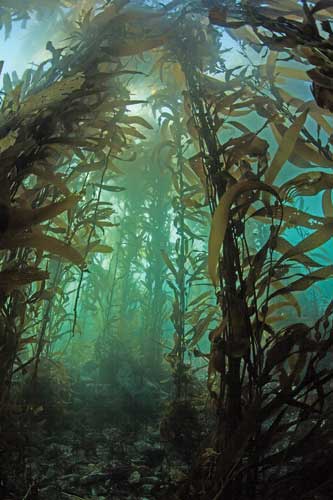 Seaweed, Nutrition, and Health
Seaweed, Nutrition, and Health
“Seaweed is the food of the future: It is one of the most nutrient-dense products you can put in your body,” Shim says, and he makes a valid point. Seaweeds are fiber-rich and packed with essential micronutrients, including vitamins A, C, E, and K; calcium; folate; iodine; iron; magnesium; niacin, and omega-3 fatty acids; in addition, some varieties have a significant protein content. Because of seaweed’s strong nutrition profile and reputation as a reason for Japan’s very low incidence of cancer and other diseases, touted health benefits of seaweed abound—ranging from being a natural source for essential nutrients to assisting with weight management. Limited research corroborates some of those claims: Studies indicate that seaweeds may prevent inflammation; lower the risks of cancer, cardiovascular disease, and obesity; and reduce the body’s absorption of fat and cholesterol (Fitzgerald et al. 2011; Shalaby 2011; Lee et al. 2013; Awang et al. 2014). Aside from how seaweeds may improve human health, their most significant benefit might be that they are a sustainable food that does not require the use of already overburdened land and freshwater sources. “Eating seaweed is not just good for you; it’s also good for the environment,” Shim says.
Relying predominantly on land-based agriculture and only 10 species of seafood to feed billions of people has taken its toll and is unsustainable. The sea offers a variety of seafood and seaweeds that remain largely underutilized and should be explored. Utilizing more sources to produce food and expanding the palate of consumers are challenges that begin with the food industry and end with “seaing” the future of food.
Toni Tarver is senior writer/editor of Food Technology magazine ([email protected]).
References
Awang, A.N., J. L. Ng, P. Matanjun, M. R. Sulaiman, T. S. Tan, and Y. B. H. Ooi. 2014. “Anti-Obesity Property of the Brown Seaweed Sargassum polycystum Using an in Vivo Animal Model.” J. Appl. Phycology 26(2): 1043–1048.
Belin, R. J., P. Greenland, L. Martin et al. 2011. “Fish Intake and the Risk of Incident Heart Failure: The Women’s Health Initiative.” Circ. Heart. Fail. 4(4): 404–413.
Fitzgerald, E., E. Gallagher, D. Tasdemir, and M. Hayes. 2011. “Heart Health Peptides from Microalgae and Their Potential Use in Functional Foods.” J. Agric. Food Chem. 59(13): 6829–9836.
HSPH. 2015. Harvard School of Public Health: “Fish: Friend or Foe?” http://www.hsph.harvard.edu/nutritionsource/fish/.
Lee, J. C., M. F. Hou, H. W. Huang, F. R. Chang, C. C. Yeh, J. Y. Tang, and H. W. Chang. 2013. “Marine Algal Natural Products with Anti-Oxidative, Anti-Inflammatory, and Anti-Cancer Properties.” Cancer Cell Int. 13:55.
Pimental, D., M. Whitecraft, Z. R. Scott et al. 2010. “Will Limited Land, Water, and Energy Control Human Population Numbers in the Future? Hum. Ecol. 38: 599–611.
Raji, C. A., K. I. Erickson, O. L. Lopez et al. 2014. “Regular fish consumption and age-related brain gray matter loss.” Am. J. Prev. Med. 47(4): 444–451.
Seafood Health Facts. 2015. “Seafood Choices.” http://seafoodhealthfacts.org/seafood_choices/overview.php.
Shalaby, E. A. 2011. “Algae as Promising Organisms for Environment and Health.” Plant Signal Behav. 6(9): 1338–1350.
USDA. 2015. USDA National Nutrient Database for Standard Reference. http://ndb.nal.usda.gov/
